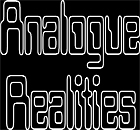DISCLAIMER:
You do not have a guarantee to have a working electronic device when you are done.
Buy buying a PCB or other part from me, you agree and represent that:
- You have experience, training, and/or education in electronics and circuits and electronic safety matters. Electricity can be dangerous if you don’t know what you are doing. DON’T BUY A PCB IF YOU AREN’T QUALIFIED.
- You know how to solder and can work with relatively small pads and possibly a lot of point to point wiring for the panel components.
- You know you are only buying blank printed circuit boards (PCBs) that are one part of constructing an electronic device used in the making of electronic music. You will need to source all the other components, including panels, knobs, switches, jacks, tools, and any other supplies needed.
- You know that while these projects individually are not inherently dangerous, they can nevertheless involve exposure to danger such as line voltage, materials containing lead and other dangerous or poisonous materials and liquids, and proper precautions must be taken and you are familiar with these precautions.
You also represent you know and or understand that:
- You are NOT buying a do-it-yourself kit with all the pieces to finish the project, just the PCBs.
- While I will do what I can to help, this isn’t my day job, it’s my hobby. Don’t do the project unless you understand the circuit well enough to at least do some basic trouble shooting on your own.
- These PCBs are not inherently dangerous, but their construction can involve exposure to high voltage, burn hazards, materials and liquids that may contain lead and other harmful substances and that you will implement proper safety practices to guarantee your health and well being.
- You understand, acknowledge, and accept that the seller (Analogue Realities) of the PCBs will not be held responsible for any damage or loss physically, mentally, or financially that results from these PCBs directly or indirectly.
The following pages describe a synthesizer designed by Nyle Steiner and Richard (Dick) Parker in the 70s and 80s. This was a truly unique and original design which has to some extent fallen into obscurity. There are also my versions of a few of the modules from the legendary Moog™ Modular system but the primary focus was and will continue to be the circuits by Nyle Steiner.
You will find schematics, notes and tips on building, and front panel designs. PCBs are offered and I will try to keep stock on most if not all PCBs.
I think the PCB layouts are reasonable and don’t require special skills, such odd component installation except maybe the VCO which requires you to bridge a thermistor over some transistors or an IC package. That said, I don’t recommend these for a beginner. Trouble shooting these circuits can be difficult if you don’t have a good handle on transistor theory. Variability can make 9999 out of 10000 PCBs work, but make another one not work, even though all the parts are installed correctly. Nyle did a great job making quality robust designs, but you will need to understand a different level of electronics than op amp circuits if something is off. An example is the triangle shaper on the VCO. Nyle found that variations in the FETs in the VCO core would prevent a good triangle shape. The fix was to put the trimmer on the other side of a transistor (documented on the schematic and build notes…). Things like this can be a real “gottcha”, especially for a beginner.
That said, TAKE HEART!!! These circuits do work and so far, I’ve not had any problems except where I used the wrong part, or put a part in wrong, like a 2.2k instead of a 22k. These are incredibly clever and unique modules which have a character all their own, very much like their creator, Nyle Steiner. Nyle has been invaluable in trouble shooting the prototypes and has made a few subtle changes that make these deigns even better.
I will do all I can to help you trouble shoot, BUT you should have a good volt meter, oscilloscope, and the other usual test equipment to help. You should also read up on BJT and FET transistors and really look at the schematics before you build the module.
Thanks for visiting and I hope you have as much fun with these modules as I have had recreating, building, and using them.
——————————————————————————————————————————————————————————————————————
All information, specifications, pricing, etc. on this web site subject to change without notice. Nothing on this site may be copied, reproduced, redistributed, or otherwise used without the express written consent of Analogue Realities.
“Synthasystem” is a trademark of Steiner Synthesizers
“Moog” is a trademark of Moog Music


